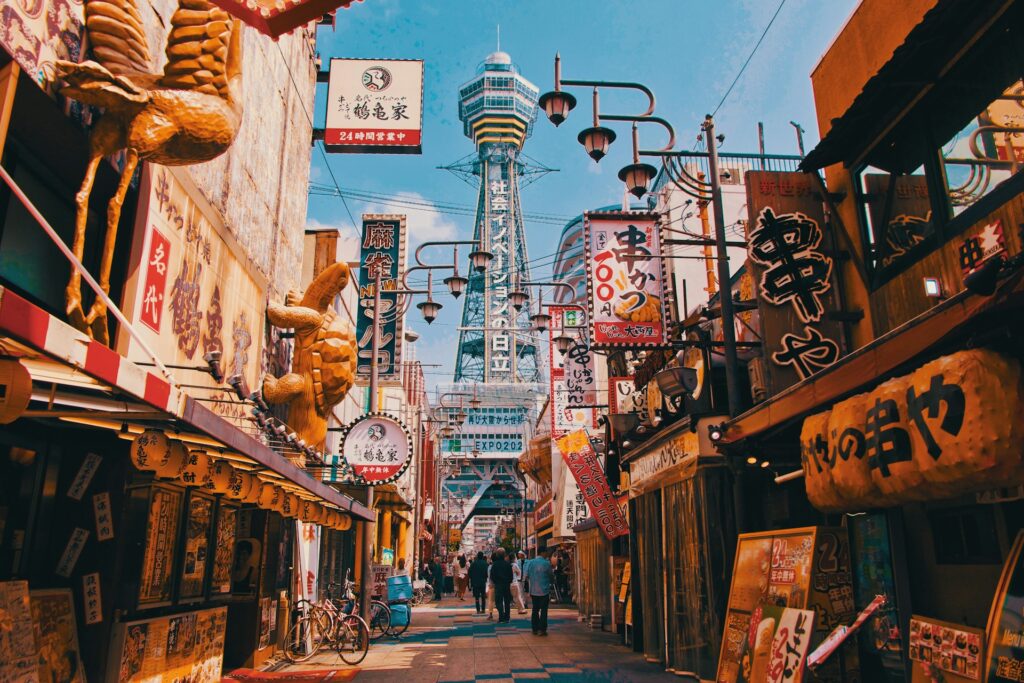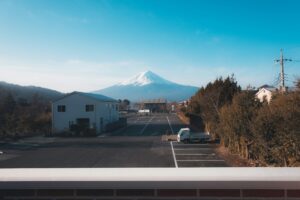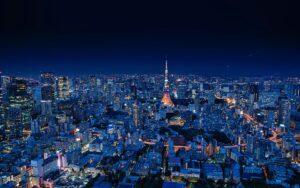Osaka, known for its vibrant street food, bustling shopping districts, and historic landmarks, is a lively metropolis in Kansai, Japan. Located 330 km (205 miles) east of Hiroshima, Osaka is accessible by Shinkansen (bullet train), bus, flight, or private car. This guide covers all available travel options, including travel times, costs, and tips for convenience. Don’t forget, you can easily book your tickets through our online search form at the top of the page.
Overview of Travel Options
Here are the main ways to get from Hiroshima to Osaka:
- By Shinkansen (Bullet Train): The fastest and most convenient option.
- By Bus: The cheapest but longer alternative.
- By Flight: The fastest but least convenient option.
- By Private Car: The most flexible but expensive choice.
Let’s explore each option in detail to help you choose the best way to travel from Hiroshima to Osaka.
Timetable
By Shinkansen (Bullet Train): The Fastest and Most Convenient Option
Taking a Shinkansen (bullet train) from Hiroshima to Osaka is the fastest and most convenient way to travel, with multiple departures throughout the day.
Key Details:
- Departure Station: Hiroshima Station.
- Arrival Station: Shin-Osaka Station.
- Duration: 1.5 to 2 hours, depending on train type.
- Price: 9,890–14,500 JPY (~$70–$100 USD), depending on class and train type.
- Train Types:
- Nozomi (Fastest, least stops).
- Sakura (Slower, more stops, slightly cheaper).
- Hikari (JR Pass valid, slower, more stops).
- Seating Options:
- Reserved Seat (Guaranteed seat, more comfortable).
- Unreserved Seat (Cheaper, first-come, first-served).
- Green Car (First class, spacious seating).
- JR Pass Valid: Yes, on Sakura and Hikari, but not on Nozomi.
- Departure Frequency: Every 15–30 minutes from morning to evening.
Pros:
- Fastest travel time (~1.5 hours on Nozomi).
- Comfortable seating with A/C and spacious legroom.
- Multiple departures throughout the day.
- No traffic delays.
Cons:
- No JR Pass coverage for Nozomi.
- Unreserved seats can be crowded during peak times.
- Higher price compared to buses.
Booking Tip:
For fastest travel, take the Nozomi Shinkansen. For JR Pass holders, take the Sakura or Hikari Shinkansen. Use our online search form to check train schedules and secure your ticket.
By Bus: The Cheapest but Longer Alternative
For budget-conscious travelers, taking a direct bus from Hiroshima to Osaka is the cheapest way to travel, though it takes longer than the Shinkansen.
Key Details:
- Departure Points:
- Hiroshima Bus Center (City Center).
- Hiroshima Station (Shinkansen Exit).
- Arrival Points in Osaka:
- Umeda (Osaka Station area).
- Namba (Central Osaka, shopping district).
- Duration: 5 to 6 hours, depending on traffic and rest stops.
- Price: 3,000–6,000 JPY (~$20–$45 USD).
- Bus Operators:
- Willer Express (Popular with tourists, budget option).
- JR Bus (Reliable and comfortable).
- Bus Types:
- Standard Bus (A/C, reclining seats, basic amenities).
- Premium Bus (More legroom, blankets, onboard entertainment).
- Departure Frequency: Every 1–2 hours from morning to evening.
Pros:
- Cheaper than Shinkansen (~3,000 JPY for budget buses).
- Direct travel without transfers.
- Multiple departures throughout the day.
Cons:
- Takes significantly longer than Shinkansen (~5+ hours).
- Subject to traffic delays, especially on weekends.
- Limited luggage space.
Booking Tip:
For better comfort, choose a Premium Bus with more legroom and reclining seats. Use our online search form to check bus schedules and book your ticket.
By Flight: The Fastest but Least Convenient Option
Although flights between Hiroshima and Osaka are available, they are not recommended as they require airport transfers and additional travel time, making the total journey longer than the Shinkansen.
Key Details:
- Departure Airport: Hiroshima Airport (HIJ).
- Arrival Airport: Osaka Itami Airport (ITM) or Kansai International Airport (KIX).
- Duration: 1 hour flight + 1.5 hours airport transfers.
- Price: 10,000–20,000 JPY (~$70–$140 USD).
- Airlines:
- ANA (Full-service, includes baggage).
- JAL (Full-service, includes baggage).
- Flight Frequency: 2–3 daily flights (morning and evening).
Airport Transfers in Osaka:
- From Itami Airport to Osaka City Center:
- By Limousine Bus: 30 minutes,
700 JPY ($5 USD). - By Taxi: 20 minutes,
3,000 JPY ($20 USD).
- By Limousine Bus: 30 minutes,
- From Kansai Airport to Osaka City Center:
- By Train (Nankai or JR Haruka): 45 minutes,
1,500 JPY ($10 USD). - By Taxi: 1 hour,
15,000 JPY ($100 USD).
- By Train (Nankai or JR Haruka): 45 minutes,
Pros:
- Fastest air travel time (~1 hour).
- Comfortable and convenient.
Cons:
- Not recommended due to airport transfers and total travel time (~3+ hours).
- More expensive than Shinkansen and buses.
Booking Tip:
Only consider flying if you find a significantly discounted fare. Use our online search form to compare flight options.
By Private Car: The Most Flexible but Expensive Choice
For travelers who prefer privacy, comfort, and flexibility, renting a car from Hiroshima to Osaka is an option, especially for families and groups.
Key Details:
- Route: Hiroshima → Osaka via Sanyo Expressway.
- Distance: 330 km (205 miles).
- Duration: 4 to 5 hours, depending on traffic.
- Toll Fees:
8,000 JPY ($55 USD). - Gasoline Cost:
5,000 JPY ($35 USD). - Car Rental Price: 10,000–20,000 JPY per day (~$70–$140 USD).
Pros:
- Most flexible option—stop at attractions along the way.
- Comfortable for families and groups.
- Direct travel to your hotel in Osaka.
Cons:
- More expensive than trains and buses.
- Traffic delays are possible.




